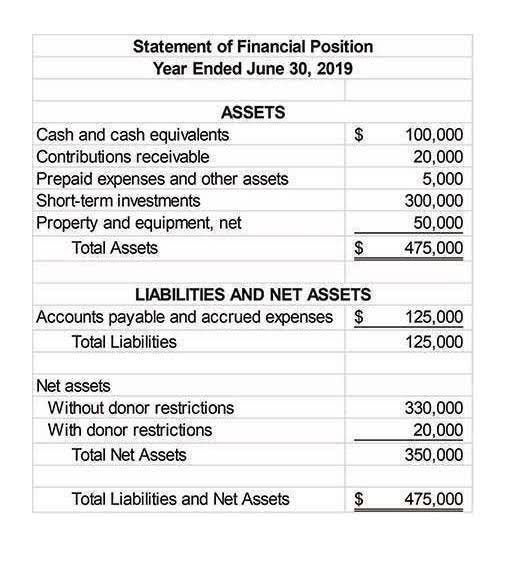
Choosing the right reporting period for your balance sheet is crucial as it affects the analysis and interpretation of results. The reporting period can be monthly, quarterly, or annually depending on the business’s needs. Make sure to also generate an income statement to provide more insight on your performance. It does mean, however, that the company had to take on debt or issue equity to stay cash-flow positive, which is a sign that its operating activities might not be particularly effective. Cash flow from financing activities is also regularly used by potential investors to assess company health. Let’s say you’re analyzing the cash flow statement for last month, and you have a positive cash flow of $45,000.
Calculation of Cash Flow From Operating Activities
But a sustained pattern can be a red flag indicating chronic debt or over-leveraging. In such cases, the company must reevaluate and perhaps recalibrate its debt management strategy to ensure financial sustainability over the long run. Furthermore, a sustained negative cash flow from financing activities might be an indication of over-leveraging. Leverage, as we know, involves using borrowed capital in hopes of amplifying potential returns. It becomes detrimental when a company borrows too much and is unable to meet its financial obligations. The cash flow from financing activities is an essential subsection of a company’s cash flow statement, providing insights into the company’s financial standing.
Structure of the Cash Flow Statement
Based on the cash flow statement, you can see how much cash different types of activities generate, then make business decisions based on your analysis of financial statements. Real-world cash flow statements can be more complex and may include additional items. It’s always recommended to consult with a financial advisor or accountant for specific guidance. The first step in preparing a cash flow statement is collecting the necessary financial documents, including the income statement and balance sheet. Accurate bookkeeping is essential to ensure that you are using the correct information.
- Ideally, a balanced capital structure seeks to lower the cost of capital by carefully managing debt and equity proportions.
- Evaluate the investing cash flow to determine the company’s investment strategy and its impact on long-term growth prospects.
- Calculate cash flow from financing activities by summing the cash inflows and outflows related to debt and equity financing.
- This will enable you to keep a close eye on your inflow and outflow of cash over a specific time period.
- If a company regularly issues new shares or takes on more debt, it may indicate that it’s unable to generate sufficient earnings to fund its operations independently.
- The CFS measures how well a company manages its cash position, meaning how well the company generates cash to pay its debt obligations and fund its operating expenses.
- However, the cash flow statement also has a few limitations, such as its inability to compare similar industries and its lack of focus on profitability.
Investing activities
This causes a disconnect between net income and actual cash flow because not all transactions in net income on the income statement involve actual cash items. Therefore, certain items must be reevaluated when calculating cash flow from operations. Investing activities include any sources and uses of cash from a company’s investments. Purchases or sales of assets, loans made to vendors or cash flow from financing activities received from customers, or any payments related to mergers and acquisitions (M&A) are included in this category. In short, changes in equipment, assets, or investments relate to cash from investing.
- For example, if you calculate cash flow for 2019, make sure you use 2018 and 2019 balance sheets.
- The financing activity in the cash flow statement focuses on how a firm raises capital and pays it back to investors through capital markets.
- It might be an unattractive investment opportunity if the company is consistently issuing new stock or taking out debt.
- Changing market conditions, evolving consumer preferences, or new competitors can impact a company’s cash flow in ways not reflected in past data.
- It also helps investors and creditors assess the financial health of the company.
- They should always be seen in conjunction with other statements and management discussion & analysis.

By learning how to read a cash flow statement and other financial documents, you can acquire the financial accounting skills needed to make smarter business and investment decisions, regardless of your position. Ideally, a company’s cash from operating income should routinely exceed its net income, because a positive cash flow speaks to a company’s ability to remain solvent and grow its operations. For non-finance professionals, understanding the concepts behind a cash flow statement and other financial documents can be challenging. Key metrics like the operating cash flow margin and free cash flow also help assess profitability and predict future cash flows. Comparing these metrics against industry benchmarks can provide valuable insights into a company’s performance relative to its peers.
The cash flow statement is a vital financial document that provides an overview of a company’s cash inflows and outflows during a specific period. Changes in long-term debt can be found on the balance sheet as well as notes to the financial statements to summarize other linkages between a firm’s balance sheet and cash flow from financing activities. The main components of a cash flow statement are cash flows from retained earnings operating activities, investing activities, and financing activities. To calculate dividends paid in cash flow statements, subtract the net change in retained earnings from the annual net income.

Cash Flow From Financial Activities
In both cases, they have to pay interest to their creditors as well as bondholders. Cash flow is typically depicted as being positive (the business is taking in more cash than it’s expending) or negative (the business is spending more cash than it’s receiving). While it can indicate expansion, consistent reliance on debt might signal potential liquidity issues or an unsustainable growth strategy. However, if income is low, buybacks or dividends can raise concerns, as they may suggest the company is attempting to bolster its share price amid weak earnings.

In this scenario, the company may be focused on stabilizing its operations and less likely investing intensively in growth. When a company issues new shares, it’s essentially selling part of itself to raise money. This additional capital might improve the company’s cash flows, thereby providing increased resources for CSR initiatives. For example, if a company has a plan to minimize its carbon footprint, the extra money can be used to purchase energy-efficient machinery or invest in renewable energy sources. Items impacting this company’s funding are the line of credit (also called a revolver), debt, equity, and dividends. The only line items that are impacted in the forecast (2018 to 2024) are the repayment of debt and the drawing down on the line of credit.

But a company that can generate positive cash flow from financing activities might suggest they are in good financial health. Add the net cash flows from operating, investing, and financing activities to determine the overall change in cash and cash equivalents for the period. A Bookkeeping for Chiropractors cash flow statement tracks the inflow and outflow of cash, providing insights into a company’s financial health and operational efficiency.